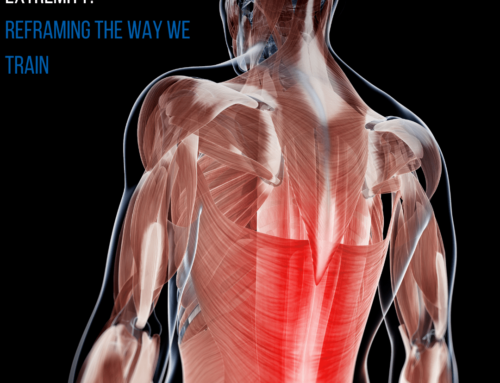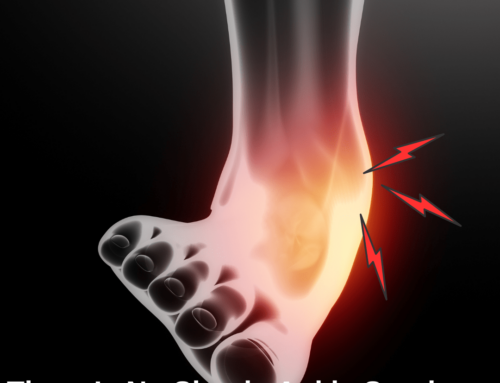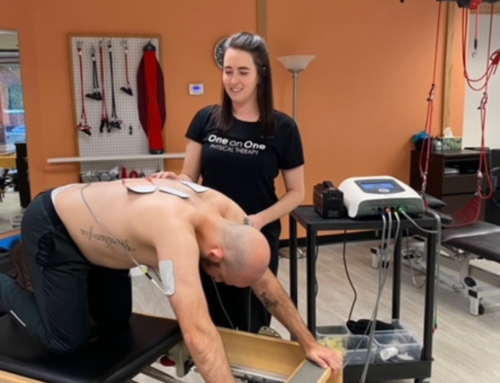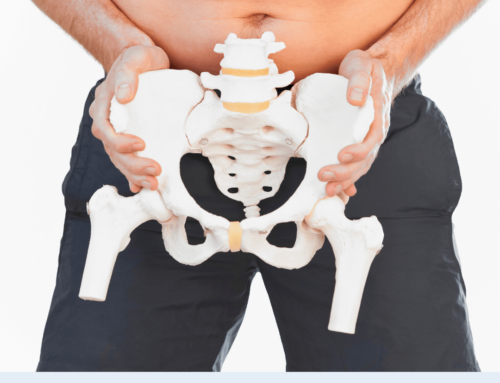Weakest Link // Tennis Injuries & the Kinetic Chain

Do you have multiple or recurring injuries that seem to not go away? Tennis Elbow, Rotator Cuff Tendinitis, and Low Back and Neck Strains are among the most common injuries in tennis players. Injuries can happen because you are training way too much, you are not preparing or recovering properly, or because you have weaknesses or “weak links” in your kinetic chain. Tennis players can develop weak links and imbalances in flexibility, strength and range of motion, which can adversely affect performance.
Who taught you how to play tennis? Was it a parent, a high school coach, spouse? Or did you just pick up a racket one day and hit the court? Do you warm-up and cool-down before and after your practice and matches? If you are like most of my patients, you picked up a racket and specialized in tennis from an early age and don’t know what a dynamic warm-up and cool-down are and you have never heard of the kinetic chain and how weak links in the chain may impact your game. Like most of my tennis athletes, they get to court, swing their arms around a few times and start hitting. The cool-down for the average recreational tennis player is either drinking beer or having a few glasses of wine. You know it’s true! Our youth athletes often times don’t make time to cool-down as they are picked up right after tennis practice and head home for dinner and homework.
Someone may have taught you the fundamentals of tennis, but perhaps no one ever taught you that in order to prevent injuries and perform optimally, it is critical that you your body is functional optimally and that you warm-up and cool-down before and after tennis. In addition, research in sports and tennis medicine suggests that assessing and correcting the muscular asymmetries in your kinetic chain may reduce the risk of tennis related injuries.
Did you know that approximately 50% of tennis injuries are caused by overuse? Once an injury or pain occurs and if not adequately rehabbed, weaknesses or “weak links” can persist within the body’s kinetic chain. The kinetic chain is a combination of successively arranged joints that create a coordinated movement. For example, in the tennis serve, you must bend your knees to absorb the ground reaction forces, which are transferred from the ground into your feet, through your knees, into the hips and spine, up the shoulder and out the racket so you can strike the ball. Remember that song, “your hip bone is connected to your knee bone, the knee bone is connected to your ankle bone.” Well, it’s true! The best way to maximize power and minimize load to your muscles and joints is through efficient use of the kinetic chain.
Weak links are inevitable in tennis because it is an asymmetrical sport. It is common that injuries or pain that you are dealing with may be a result of deficits within the kinetic chain that may be above or below the actual location of your pain or injury. Over 50% of the power you generate in your tennis serve comes from your core (abdominals, gluteals, low back muscles). So, it is common that we find asymmetries and weak links in the core and in the scapular stabilizers (the muscles around your shoulder blade and neck). If your core and trunk muscles are not strong enough, you will not be able to transfer ground reaction forces up the kinetic chain, which will decrease racket and ball speed. So, in order to generate the same amount of force and ball speed in the presence of weak links in the core, hip and scapular muscles, you will overuse some other part of the body, often the low back, shoulder, and elbow causing strains and tendinitis. So, while you may feel strong, you may have some hidden weak links in your musculoskeletal system that are actually limiting you and are the cause of your pain.
So, how do we assess for weak links? Neurac Weak Link Testing is a comprehensive, evidence-based method utilizing the Redcord Suspension Workstation for the examination and treatment of neuromuscular weak links and asymmetries. Redcord is unique because you exercise while suspended in ropes and bungee cords, which facilitates muscle activation. The Neurac Weak Link Testing consists of 7 lower extremity tests and 5 upper extremity tests. Studies have shown that injury, pain and inactivity disturb our brain’s capacity to switch on the right muscles at the right time and with the right amount of strength. This loss of neuromuscular function diminishes our “local” muscle control, often leading to decreased quality of movement and increased musculoskeletal pain causing our larger “global” muscles to take over (compensate) and eventually become stressed, strained and painful. The Neurac Method aims to normalize this muscle interaction by re-activating your muscles. By using the Redcord you will experience a decrease in pain and improved function in less time than conventional treatment methods.
Physical Therapists with knowledge of tennis can assess and correct weaknesses in the kinetic chain and can educate you on proper warm-up and cool-down techniques and other recovery strategies effectively treating pain and injuries, preventing future injuries, and enhancing your performance lengthening your tennis career. Weak Link Testing should be an integral component of a physical therapy evaluation of any tennis player. If you are having elbow, shoulder, or back pain, or simply want to improve your flexibility, joint and spinal mobility, and just perform better, contact your Physical Therapist to help get you back on the court.
This article was submitted by Melissa Baudo Marchetti PT, DPT, SCS, MTC. She received her Doctor of Physical Therapy from Emory University and is a Board Certified Sports Clinical Specialist at One on One Physical Therapy, a multidisciplinary private practice in Atlanta, GA. For nearly 5 years she was a full-time Sports Physical Therapist for the WTA Tour and is a Tennis Medicine Expert. She teaches a Sports PT Course and assists in teaching Orthopedics within the Division of Physical Therapy at Emory University.






